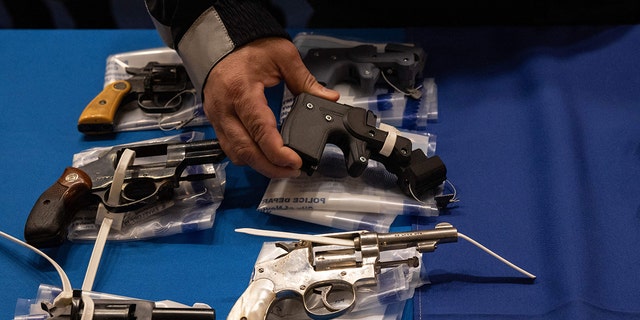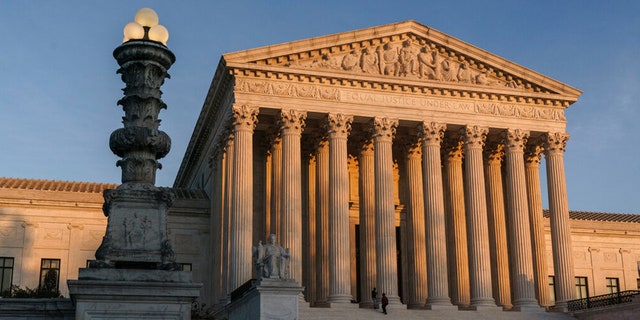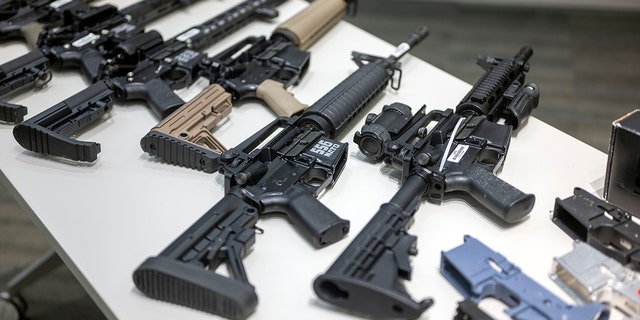
The U.S. Supreme Court has sided with the Biden administration, temporarily allowing enforcement of regulations over so-called “ghost guns” that can be made from kits at home.
The administration appealed a federal judge’s earlier ruling tossing out the regulations. In a 5-4 vote, the high court put that ruling from Texas on hold while the case is appealed further on the merits. The regulation will be enforced while the case is appealed to the 5th U.S. Circuit Court of Appeals in New Orleans and possibly further to the Supreme Court.
Justices Thomas, Alito, Gorsuch, and Kavanaugh would have allowed the lower court ruling to go into effect.
The federal regulation was put into place a year ago, and would put ghost guns under the same control as other fully assembled firearms, making it easier to trace serial numbers, background checks, and sales. The rule requires unfinished parts of a firearm like the frame of a handgun or the receiver of a long gun to be treated like a completed firearm. These parts need to be licensed and must have serial numbers.
CALIFORNIA LAW ENFORCEMENT SEIZE 54 GHOST GUNS LAST YEAR FROM PEOPLE WHO CAN’T LEGALLY OWN FIREARMS

Kings County District Attorney Eric Gonzalez holds a 3D printed ghost gun during a statewide gun buyback event held by the office of the New York State Attorney General, in the Brooklyn borough of New York on April 29, 2023. (YUKI IWAMURA/AFP via Getty Images)
The rule also requires manufacturers to run background checks before selling these parts, as they are required to do for whole commercial firearms.
The Biden administration argued the rule is necessary to respond to rising numbers of untraceable guns.
The Justice Department had told the court that local law enforcement agencies seized more than 19,000 ghost guns at crime scenes in 2021, a more than tenfold increase in just five years.
PHILADELPHIA SUES GHOST GUN DISTRIBUTORS AFTER DEADLY MASS SHOOTING

The Supreme Court building in Washington, D.C. (AP Photo/J. Scott Applewhite, File)
“The public-safety interests in reversing the flow of ghost guns to dangerous and otherwise prohibited persons easily outweighs the minor costs that respondents will incur,” Solicitor General Elizabeth Prelogar, the administration’s top Supreme Court lawyer, wrote in a court filing.
FEDERAL JUDGE IN COLORADO BLOCKS LAW RAISING AGE REQUIREMENT FOR GUN PURCHASES

Seized ghost guns on display at LAPD Headquarters during a news conference to announce a reward program focused on getting unserialized ghost guns off the street. (Hans Gutknecht/MediaNews Group/Los Angeles Daily News via Getty Images)
Gun rights groups and a firearms parts manufacturer challenging the regulation argue the Bureau of Alcohol, Tobacco, Firearms and Explosives (ATF) lacks the authority to change the definition of a firearm in federal law without an act of Congress. U.S. District Judge Reed O’Connor, in Fort Worth, Texas, sided with plaintiffs challenging the rule last June, finding that the definition of a firearm in federal law does not cover the individual parts of a gun.
CLICK HERE TO GET THE FOX NEWS APP
Lawyers for the Firearms Policy Coalition told the Supreme Court that O’Connor was right and that ATF had abandoned more than half a century of regulatory practice by expanding the definition of a firearm.
“We’re deeply disappointed that the Court pressed pause on our defeat of ATF’s rule effectively redefining ‘firearm’ and ‘frame or receiver’ under federal law,” said Cody J. Wisniewski, FPCAF’s General Counsel and Vice President of Legal, and FPC’s counsel in this case. “Regardless of today’s decision, we’re still confident that we will yet again defeat ATF and its unlawful rule at the Fifth Circuit when that Court has the opportunity to review the full merits of our case.”
The Associated Press contributed to this report.









